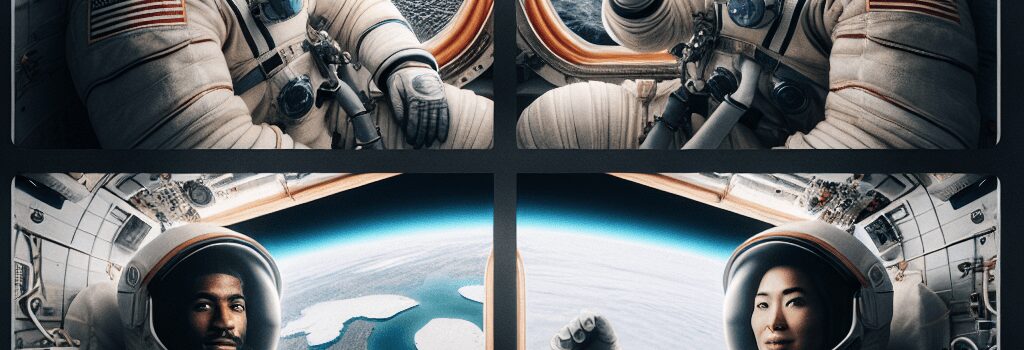Four Private Astronauts Blaze New Trails in Polar Orbit on Fram2 Mission

In an unprecedented deep-dive into uncharted low-Earth orbit, four private astronauts embarked on the Fram2 mission—marking the first human flight to traverse a polar orbit. Launched on Monday night from NASA’s historic Kennedy Space Center, the mission was initiated by a Falcon 9 rocket carrying SpaceX’s latest Crew Dragon capsule, Resilience. This flight, helmed by Chinese-born cryptocurrency billionaire Chun Wang, signals a paradigm shift in how private citizens engage with space exploration.
Mission Overview and Flight Path
The Falcon 9 rocket lifted off at 9:46 pm EDT Monday (01:46 UTC Tuesday) under stormy skies near the Kennedy Space Center. Instead of following the traditional northeast trajectory aimed at the International Space Station (ISS), the launch vehicle conducted a meticulous maneuver from Launch Complex 39A. By initially arcing southeast and then turning south, it precisely aligned into a polar orbit with a 90-degree inclination relative to the equator. This rare orbital path ensures that the capsule passes directly over the North and South Poles every 45 minutes, providing an extraordinary vantage point for both scientific exploration and visual documentation.
Technical Specifics and Innovations
At the heart of this mission is SpaceX’s Falcon 9 booster and Crew Dragon capsule. With performance metrics including a maximum delta-v that allows maneuvers at speeds approaching 5 miles per second and carrying nearly 1 million pounds of propellant, the technology demonstrates both robust reliability and precision. The Crew Dragon used for Fram2 now includes a state-of-the-art cupola window—initially proven on the Inspiration4 mission—which provides a panoramic view of Earth, thereby augmenting the crew’s ability to capture immersive 3D imagery during the flight.
Expanded Objectives and In-Flight Experiments
The Fram2 mission is not solely about unprecedented navigation; it also encompasses rigorous scientific research. The crew is tasked with 22 experiments contributed by research teams from eight countries, focusing on the physiological and psychological impacts of space on humans. Among these experiments are studies on cognitive performance, crew cohesion under high-radiation polar orbits, and even a pioneering test of a portable gym designed for the confined space of the Dragon capsule. Additionally, the mission includes the first attempt to cultivate mushrooms in microgravity—a step that may provide insights into sustainable food production for long-term space missions.
Advanced Orbital Mechanics and Flight Trajectories
- Polar Orbit Advantages: Unlike the traditional orbit used for ISS rendezvous, the polar flight path offers a unique opportunity to research high-altitude radiation exposure and its effect on human physiology. The trajectory offers repeated passes over Earth’s poles, where orbital dynamics differ significantly from equatorial missions.
- Precise Navigation Techniques: Achieving a 90-degree inclination demands advanced propulsion and flight control techniques. SpaceX engineers leveraged autonomous trajectory correction algorithms integrated with Mission Control operations to ensure the spacecraft adhered to the planned route, showcasing the maturity of crewed flight autonomy.
- Communications Infrastructure: A Starlink laser terminal onboard bolsters the mission’s connectivity by linking rapidly to SpaceX’s broadband network, ensuring high-speed internet for data transfer and real-time communication with Earth.
Innovations in Crew Training and In-Orbit Science
Fram2 marks a turning point not only in mission trajectory but also in crew composition and training methods. Unlike previous missions staffed with experienced pilots and career astronauts, this expedition includes polar explorers and professionals from diverse fields, none of whom have a conventional background in spaceflight. SpaceX’s vice president of Falcon and Dragon programs, Jon Edwards, highlighted the rigorous training regimen which simulated high-speed ascents at 17,500 miles per hour. The crew learned to operate advanced touchscreen interfaces and manage autonomous systems, underscoring the evolution of human factors engineering in space travel.
Rabea Rogge, a robotics researcher now piloting the vehicle, explained, “Our training focused on how to calmly manage the spacecraft through fully automated sequences, adapting techniques derived from polar expedition protocols to the challenges of space.” Such insights could be vital in democratizing space access in the near future.
Scientific and Cultural Implications of Polar Exploration
The Fram2 mission fosters a multifaceted dialogue among scientists, engineers, and explorers. Jannicke Mikkelsen, acting as the vehicle commander and a seasoned cinematographer from Svalbard, emphasized the symbolic significance of capturing Earth’s auroras and polar landscapes in 3D. “This mission isn’t just about reaching space—it’s about recording the unfiltered beauty of the planet from a perspective few have experienced,” she remarked. Her collaboration with NASA astronaut Don Pettit for optimal camera settings is expected to push the boundaries of space photography.
Moreover, the mission encourages citizen science. With an outreach to over 2.2 million auroral enthusiasts via the SolarMaX mission website, individuals around the world are invited to contribute ground-based auroral observations concurrently with the crew’s orbital passes.
Future Implications and Industry Impact
Fram2 is a harbinger of transformative trends in private space endeavors. The mission underscores a competitive shift away from traditional ISS rendezvous missions toward exploring novel orbital regimes. As the success of Fram2 amplifies interest in polar orbits, we may soon witness a surge in missions that leverage these trajectories to study Earth’s magnetic anomalies, atmospheric dynamics, and even search for natural resources in space.
Expert voices in the industry, including those in startups and innovation sectors, anticipate that the burgeoning field of commercial spaceflight will drive technical advancements not only in propulsion and navigation systems but also in life support, in-flight entertainment, and autonomous robotics—all critical components of future deep-space habitats.
Conclusion
Ultimately, the Fram2 mission is much more than a journey over Earth’s poles; it is a bold statement about pushing the boundaries of human exploration. From the precise engineering that enabled a perfect polar orbit to groundbreaking scientific experiments and immersive, real-time visual documentation of the Earth, every facet of the mission resonates with the spirit of innovation and the quest for new frontiers. As private companies like SpaceX continue to collaborate with diverse explorers, the future of space travel is set to become not only more accessible but also richer in opportunities for scientific discovery and cultural expression.
Source: Ars Technica